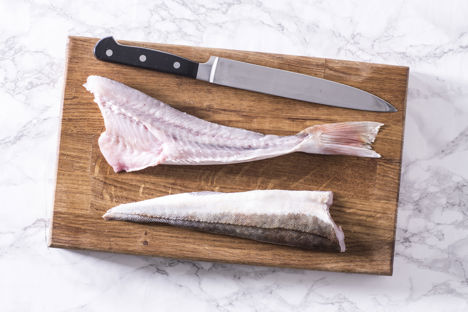Gurnard are also known as sea robins due to their large pectoral fins which mimic bird’s wings in appearance. There are three different types of gurnard - red, grey and tub - which vary in shape, size and colour but rarely exceed 40cm in length. After decades spent away from dinner tables, gurnard have become more popular in recent times as chefs and cooks look for sustainable (and tasty) fish options. They are at their best during late summer until the end of winter but best avoided during the spring and early summer months as this is their spawning season.
What to look for when buying gurnard
Like all fish, it is vital to buy gurnard when it is fresh – it should be firm to the touch and non-odorous. When choosing gurnard fillet, check the flesh to ensure there is no discolouration and it looks firm and moist.
How to cook gurnard
Gurnard is perfect for roasting whole – see Paul Foster’s Roast gurnard recipe for perfect results. Once cooked, the meat can be picked away from the bones on the plate which will save you the hassle of filleting it. You will probably need one gurnard per diner.
When filleting gurnard, be careful of their spiky fins which can easily cut your hand if you do not pay full attention. Gurnard’s firm flesh lends itself well to one-pot dishes, such as stew or bouillabaisse, as it is able to stand up to relatively long cooking times while gurnard fillets are ideal for grilling or pan-frying, just make sure that the skin is nice and crisp.
What gurnard goes with
While gurnard is not as strong as fish such as salmon or mackerel, for example, it does have a unique and tangible flavour. Its meaty texture holds a delicate flavour with residual earthy undertones. This means it matches well with other earthy ingredients like mushrooms or Jerusalem artichokes and is nicely complemented by ingredients with sharpness such as onions, white wine and lemon.
Get in touch
Please sign in or register to send a comment to Great British Chefs.



